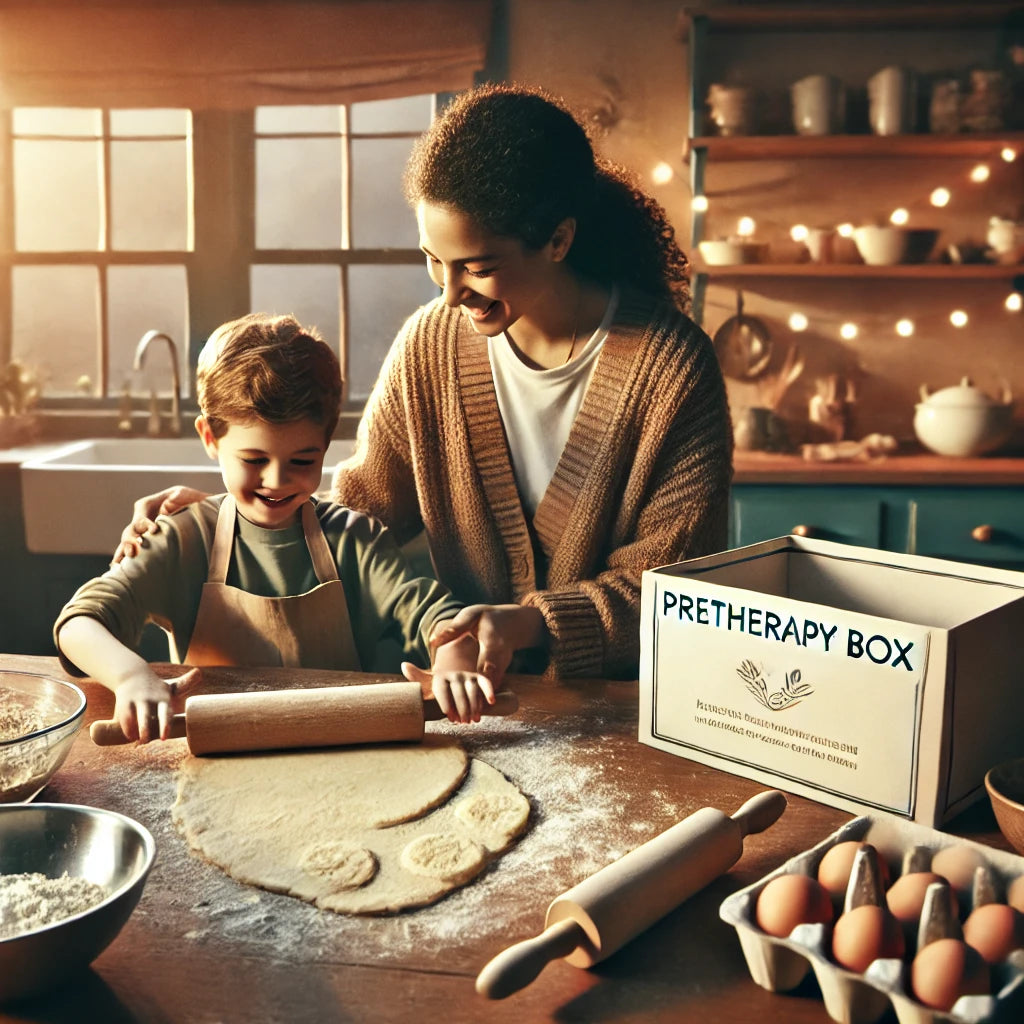As parents, we want nothing more than to keep our kids happy, healthy, and feeling safe, both physically and emotionally. But when it comes to talking about mental health, many of us aren’t sure how to start. It can feel like a big, heavy topic—but it doesn’t have to be.
One of the most powerful ways to help your child understand and talk about their mental health is by creating an open, comforting environment, and what better way to do that than over something familiar and fun? Cooking or baking together offers the perfect opportunity to have these important conversations without it feeling forced or overwhelming.
Cooking Up Conversations
Imagine this: You’re standing side by side with your child, rolling out dough or stirring a pot of soup. The kitchen smells delicious, and your hands are busy. It’s a relaxed space, which makes it easier for them to open up. You can start by saying something simple, like:
“You know, just like we follow a recipe to make this dish, sometimes our minds need a recipe to feel better when we’re having tough days. What do you do when you’re feeling worried or upset?”
The beauty of this moment is that your child is focused on the task at hand, which can make talking about feelings feel less intimidating. By linking the conversation to something they already enjoy—cooking or baking—you’re teaching them that discussing emotions doesn’t have to be scary. It can be as routine as mixing ingredients for a cake.
You can even make it interactive by “baking” some coping mechanisms into your time together. Try this:
- “Mindfulness Muffins”: While measuring ingredients, talk about how we sometimes need to pause and pay attention to how we’re feeling, just like how we carefully measure the flour.
- “Stress-Relief Smoothies”: Explain that just like blending different fruits makes a delicious smoothie, we can blend different coping strategies (like deep breathing, taking a walk, or talking to a friend) to feel better when stress bubbles up.
- “Chill-out Cookies”: Let them roll the dough and press the cookies into shape, explaining that sometimes shaping things with our hands can help us calm down when we’re feeling overwhelmed.
These small, practical lessons can teach kids that managing emotions isn’t a mystery—it’s something they can learn, just like learning to cook. They’ll start to see coping mechanisms as tools they can reach for, much like ingredients in the pantry.
A Safe Space to Share
While you’re cooking or baking, you can also gently guide the conversation toward how everyone feels down or anxious at times, even adults. This normalizes emotions and helps your child feel safe sharing their thoughts without fear of judgment. You can say something like:
“I remember feeling really worried about school when I was your age. I didn’t always know how to talk about it, and I wish I did. You know it’s okay to tell me anything you’re feeling, right? There’s no such thing as a bad feeling.”
Encourage them to talk about situations that made them feel anxious or upset recently. The goal isn’t to fix everything in one conversation but to establish an ongoing dialogue where they feel comfortable bringing up emotions whenever they need to.
Pretherapy Box: Preparing Before You Need to Repair
As your child begins to understand and practice these coping mechanisms, you might notice that they’re learning to manage some of their feelings on their own. That’s where the Pretherapy Box comes in—a tool designed to help kids, especially those with ADHD, develop coping skills and strategies before they feel like they’re in over their heads.
Just like how you’re preparing this meal together, the Pretherapy Box helps prepare your child to handle challenges in life before they need to seek professional help. It’s like DIY therapy guidance, teaching them to recognize their emotions and work through them with practical, hands-on tools. The box helps them feel in control, giving them techniques to try before things feel overwhelming.
With the Pretherapy Box, your child learns that it’s okay to ask for help—and that being prepared can make all the difference. It prepares before you need to repair, giving them the confidence to handle challenges with the same creativity and calm that you’ve fostered while cooking together.
The goal here isn’t just about addressing mental health when things get tough; it’s about building a foundation for emotional resilience early on. By incorporating these lessons in fun, simple ways, you’re giving your child the tools to face life’s challenges with strength, understanding, and a whole lot of love.
And who knows? That “recipe for feelings” you created in the kitchen might just become a tradition they carry with them for life.




Leave a comment
This site is protected by hCaptcha and the hCaptcha Privacy Policy and Terms of Service apply.